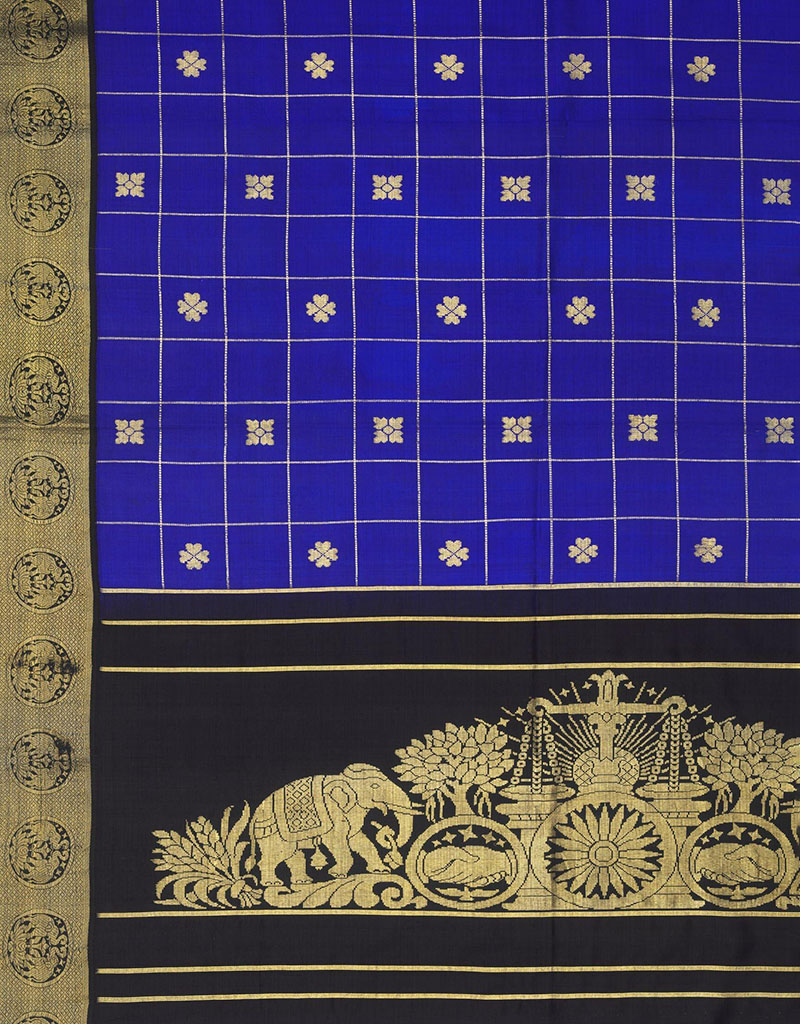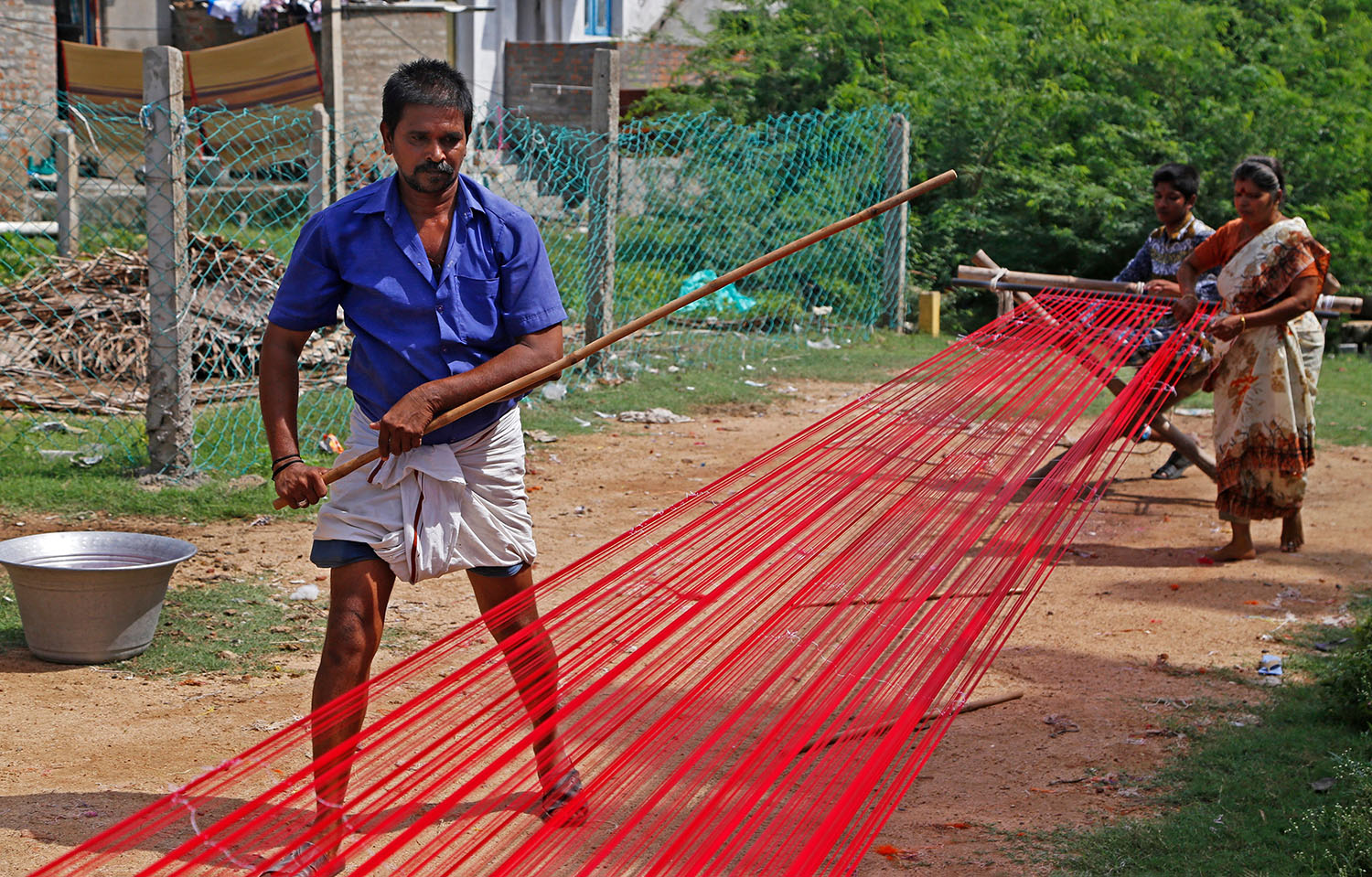ARTICLE
Kanjivaram
A Kanjivaram saree consists of three distinct parts that are woven separately — the body of the saree, the border and the pallu. The raw silk yarn is first dyed using natural and synthetic dyes, then stretched and coated with rice starch to lend it strength and stiffness. Subsequently, the length of the yarn is tied and stretched between poles to remove any knots. The yarn is then transferred onto spools and spindles using a spinning wheel. The warp yarn is transferred onto iron rods, known as warp sheets, from which they are transferred to the weaving beam where the yarn is passed through heald shafts and reeds. The silk yarns are manually joined to old warp threads on the loom — a process that is usually undertaken by the women of the community. The patterns on the pallu and border of the saree are made using punch cards, which aid the lifting of threads and automate the patterning process.
The sarees are woven on the jacquard loom using the fly-shuttle technique. The warp and weft are interlaced, after which the chain of the jacquard is pulled to tighten and form the weave. A warp of about 18 metres can typically weave three sarees of 6 metres each, with a warp count of five to six thousand. Traditionally woven Kanjivaram sarees weigh between 750–1000 grams, with each saree originally woven to nine yards (8.22 metres) and gradually shortened to six yards (5.48 metres).
The pallu and solid-coloured borders of the saree are usually dyed in the same colour and woven as one unit, while the body of the saree is woven in a separate and contrasting colour, onto which the border and pallu are then attached using the korvai technique, wherein supplementary warp threads in a contrasting colour are joined to the main body of the saree on either side of the main warp. The pallu is woven using the petni technique, wherein the thread colour is changed by preparing the same amount of contrast-colour yarn as the body warp and loop-twisting both warps on the heald wires on the opposite end of the loom. Once the twisting is done, the heald shaft and reed are slowly moved back so that the looped thread can move automatically through the healds. The pallu colour is interwoven with the body colour for up to one inch, creating a shot colour border between the pallu and the body, after which, a single shuttle is used to weave the pallu. The embossed zari designs on the pallu are woven using the jala or adai extra-weft technique, using threads that typically constitute 57 percent silver and 0.6 percent gold.
The ground of the saree is usually rendered in tonal ranges of arakku (red) or manjal (yellow), with the borders comprising dark blue, black or gold decorated with brocade zari work. The body of the saree is either sadha (plain) with coloured borders, or woven with higher count weaves such as seeru (striped) and kattam (checkered) with pettu (patterned borders) or mundani (end pieces). The design and motifs in Kanjivaram sarees are inspired by temple architecture and sculpture, as well as designs that imitate the pattern of the rudraksha or sacred beads. Other common motifs include flowers, leaves, fruits, mayilkan (peacock’s eye), swans, parrots and mallinaggu (jasmine). Kanjivaram silk is also used to make pattu langas, or skirts worn by teenage girls.
The introduction of power looms led to the production of mechanised and imitation Kanjivaram sarees; however, traditionally woven sarees continue to use the jacquard loom. Since pure silk Kanjivaram sarees are relatively expensive, cooperatives have begun weaving cotton sarees featuring Kanjivaram motifs, which allows them to reach a wider market through reduced costs.
Kanjivaram silk received the Geographical Indication (GI) tag in 2005. As of 2008, over five thousand families in the Kanchipuram region were engaged in weaving across the twenty-five weaving and sixty dyeing units in the area.
Bibliography
Our website is currently undergoing maintenance and re-design, due to which we have had to take down some of our bibliographies. While these will be re-published shortly, you can request references for specific articles by writing to hellomapacademy@map-india.org.








